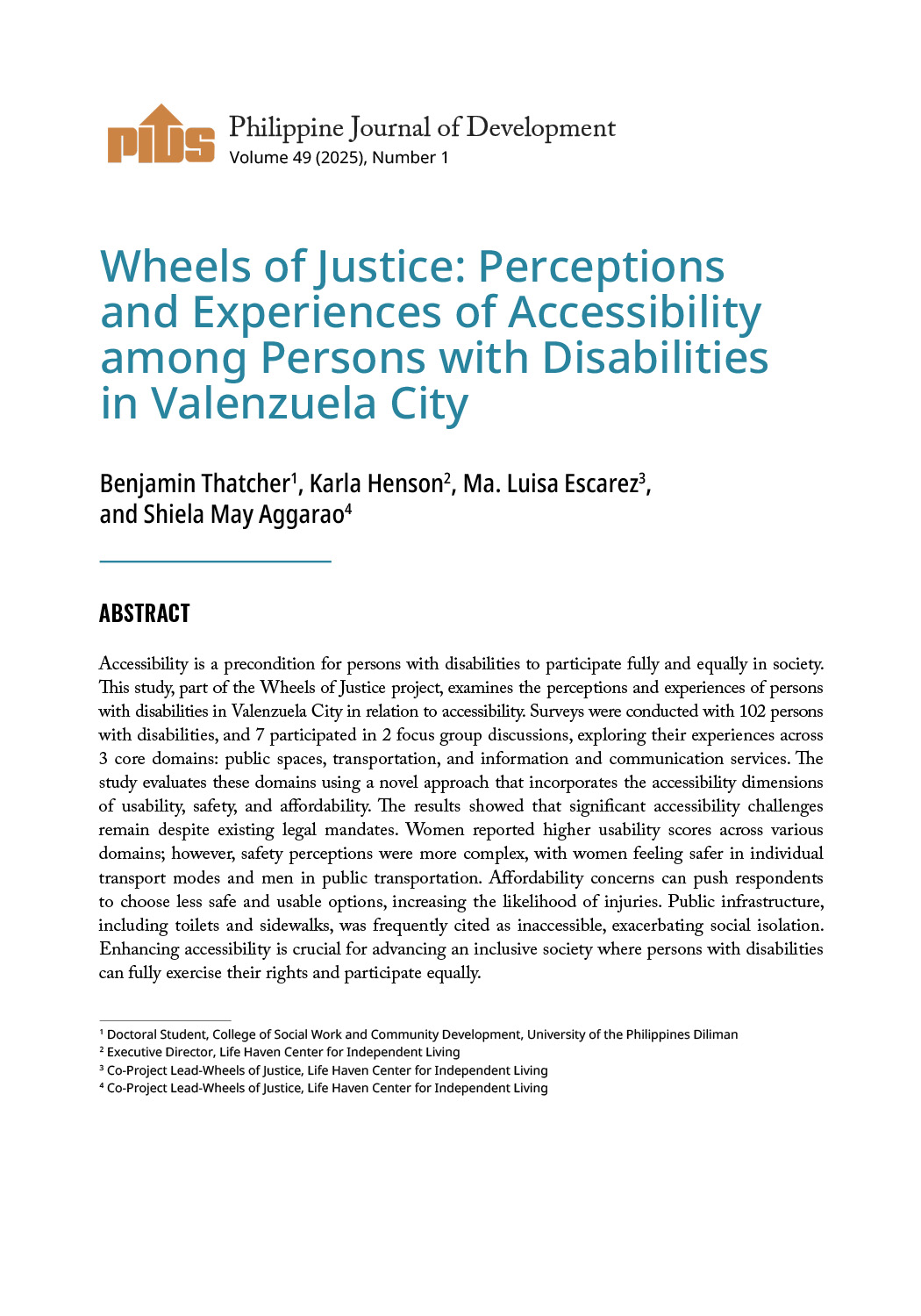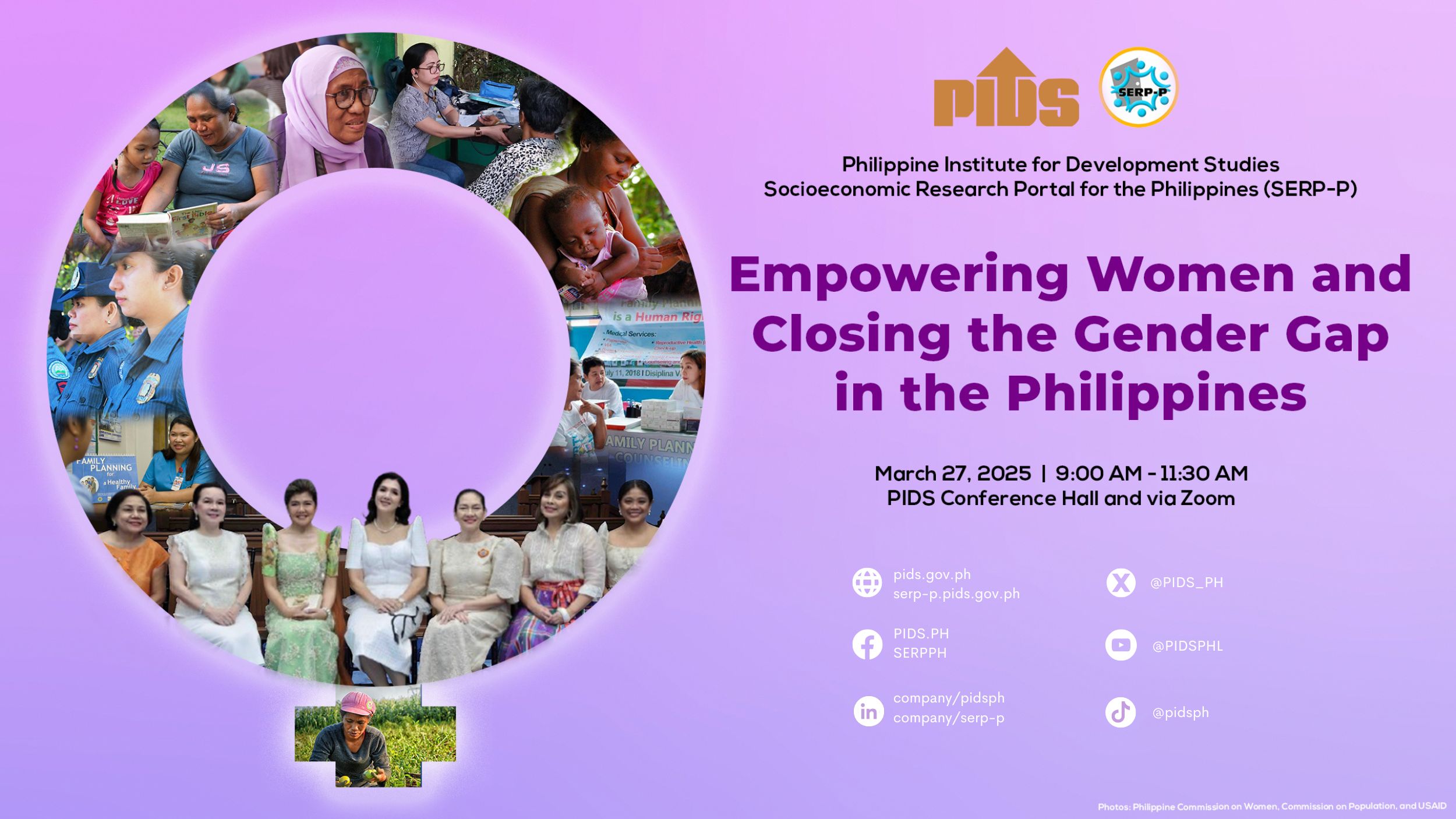The good news is that the Philippines has already started on a sustainable path of at least 6% to 8% GDP (gross domestic product) growth in the coming decades resulting from both robust consumption and investment spending on the demand side and a growing industrial sector (manufacturing, construction, and utilities) on the supply side. The bad news is that the Philippines is still notorious for having the highest poverty incidence in East Asia, with more than 20% of its population living below the poverty line. Will it be possible for the Philippines to bring down its poverty incidence rate to single digit levels in the next decade or so, emulating its peers in Southeast Asia like Vietnam, Malaysia and Indonesia? Or will economic growth just lead to more inequality of income and wealth, as has been the experience in the past?
To answer this question, we should turn to numerous studies on Philippine poverty conducted by leading economists from the University of the Philippines, the Philippine Institute of Development Studies (PIDS), the Asian Development Bank, and the World Bank. There is no shortage of evidenced-based research on the roots of Philippine poverty. I have read more than 50 scholarly papers written by both Filipino and foreign economists led by such eminent persons as Dr. Arsenio Balicasan (now the Chairperson of the Philippine Competition Commission), Alessandro MagnoliaBocchi of the World Bank, Dr. Mahar Mangahas of the Social Weather Station, Dr. Rolando Dy of the University of Asia and the Pacific and others.
At the beginning of the presidency of Benigno Aquino III, Dr. Balicasan et al.examined the impact of the Great Recession that started in 2008 on Philippine poverty. As a result of the global crisis, Philippine GDP growth decelerated by 1.0 percentage point. Among the major sectors, industry was most adversely affected with 6.0 percentage points lower than the long-term growth potential. Within the industrial sector, manufacturing suffered a deceleration of 7.7 percentage points. Philippine economic growth, which is a necessary but not sufficient condition for the reduction of poverty, is clearly partly dependent on global developments. This study in 2010, however, concluded that there are factors that are more domestically determined that have a greater impact on the poverty condition in the country. After all, our East Asian neighbors are even more dependent on global trends for their economies to grow. The fact that all of them have done a better job in reducing poverty incidence demonstrates that they have been able to put their respective economies on a better footing to survive global shocks. Compared to other Asian countries, the Philippine poverty reduction has been very slow despite respectable economic growth over a long period of time. The domestic constraints have been (1)tight fiscal situation; (2) grossly inadequate infrastructure (transport and power); and (3) low investor confidence because of corruption and political instability. The authors of the study strongly recommended higher investments in education, health, infrastructure and productive assets (land and credit) to address the poverty situation.
In a study for the ADB Institute in 2006, Dr. Balicasan et al. traced a major root of Philippine poverty to over-concentration of resources and investments in the National Capital Region and gross negligence of the regions. Providing a regional perspective, the Philippines compared poorly with its Asian neighbors, China, Indonesia and Thailand as regards poverty reduction. A major reason for this was that these three countries were able to decentralize economic activities more rapidly. Despite the good intentions of the Philippines Local Government Code of 1991, very little was accomplished in regional economic development. It was shocking to know that the inequality within regions accounts for over 80% of the national variation in household incomes. A major reason for the underdevelopment of the regions is the lack of investments in rural infrastructures, such as farm to market roads, irrigation systems and post-harvest facilities. In contrast, Thailand invested massively in countryside infrastructures, greatly benefiting both its agricultural and tourism sectors.
A study for the World Bank by Alessandro Magnolia Bocchi concluded that a major reason for the slow success in reducing poverty is the very low level of investment as a percentage of GDP compared to its neighboring Asian countries. Most Asian countries, especially the so-called “tiger economies,” invested close to a third of their GDP while the Philippines had invested less than 20%. There were three major reasons cited by Mr. Bocchi for this low investment rate: First, the public sector could not afford to expand its investment because of fiscal restraints, averaging less than 2% of GDP annually on infrastructures. Second, the capital-intensive sector did not find it profitable to expand its investment because the economy was not growing rapidly enough. Third, fast-growing businesses in the service sector (BPO-IT, real estate and retailing) did not have to raise investments significantly in order to enjoy rising profits. Thus the economy found its equilibrium at a low level of capital stock, where all economic agents had no incentive to unilaterally increase investments which are indispensable for reducing unemployment and poverty. The study recommended that economy move to a “high-capital stock” equilibrium through better-performing economic zones, a competitive exchange rate, higher tax collections and fewer elite-capturing regulations.
The most important reason for the persistently high poverty incidence in the Philippines is the relative failure of the agrarian reform program. Considering that three fourths of those who are below the poverty line are either farmers or fisherfolks, Philippine poverty is predominantly a rural phenomenon. One of the most insightful studies of agrarian reform and poverty reduction was done by Dr. Balicasan for the Southeast Asian Regional Center for Graduate Study and Research in Agriculture in 2007. From the very beginning of Philippine independence in 1946, Philippine rural poverty and rural insurgency had been linked to access to land and tenure relations. Various government administrations since the Second World War used land reform, albeit in various forms and intensity, as a key element of their poverty reduction strategies, as well as a tool to address social unrest in the rural areas. The Comprehensive Agrarian Reform Program (CARP) was implemented with the best of intentions: to redistribute the ownership of agricultural land more equitably among the small farmers and to free them from unjust practices of the big land lords. Unfortunately, the implementation of CARP suffered seriously from the inability of the State to provide the small farmers with the farm-to-market roads, irrigation system, post-harvest facilities and other rural infrastructures and services they direly needed to make their small farms productive so that they could earn a decent living. With agrarian reform, the farmers went from the frying pan into the fire. (To be continued).
For comments, my email address is bernardo.villegas@uap.asia.











